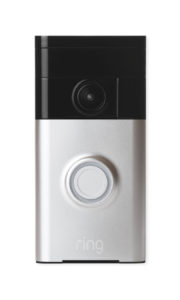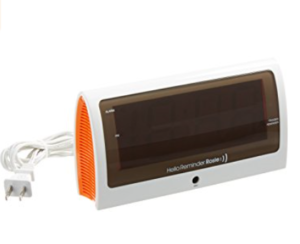We live in a rapidly changing world and that applies no matter where you live. This change is largely driven by technology and it affects every age group – including the elderly. I remember watching my parents struggle with whether or not to place my grandmother in a home when I was a teenager. They knew it wasn’t what she wanted, but it was becoming increasingly difficult for them to provide the care she need in the home as they both had careers. It’s safe to say most seniors would prefer to stay in their own homes if they could and with the growth in the popularity of assistive domotics that wish is becoming a reality in a lot more cases.
If you’re not familiar with the term assistive domotics you’re probably not alone. Basically it refers to the use of smart home technology specifically applied to senior living. Who doesn’t love those cool lights that turn on and off depending on the level of light in the home? Or the thermostat that automatically adjusts based on the temperature in each room? These types of technologies are becoming more popular all the time. They have the potential to form the basis of a technological revolution that will allow more seniors to remain in their own homes. Below we take a closer look at how domotics are transforming lives.
Security
There are numerous types of security technology that can help seniors feel safer in their own homes – apps for smartphones that can be used for remote keyless entry when used with smart door lock technology are a good example. If used in conjunction with a video doorbell the home owner can see who’s at the door without having to open it and use a video intercom to talk to them. If it’s someone they know and trust they can let them in without having to make their way over to the door. This can be especially important if they’re suffering from mobility issues. The Ring Wi-Fi Enabled Doorbell is one of the most popular video doorbells on the market today as pictured below.

Motion Sensors
As much as most of us would prefer to see our parents and elder relatives stay in their own homes it can be stressful if they’re suffering from any sort of memory loss or dementia. There’s always the concern that they may wander off and put themselves in a dangerous situation. The use of motion sensor technology at the exit points of the home can alert a care giver if a senior is leaving the home and a relative or the authorities can be contacted. The motion sensor by Votecom is a great option if you’re looking to invest in this type of technology.

Emergency Help and Video Monitoring
Motion sensor technology can also be set up to work in the interior of the home and in extreme cases this can be used to activate video monitoring. At the very least these can be used to alert emergency services when a senior’s in danger such as after a fall.
Friendly Reminders
Smart assistants such as Alexa, Siri, and Cortana are becoming increasingly popular and there are now new home assistants for seniors that can provide them with friendly reminders. These assistants can remind them to turn the stove off, to close the blinds, and to lock the door among other things. This type of technology can allow those suffering from memory loss to stay in their homes safely and with peace of mind. An innovative new product specifically created for seniors is a system called Reminder Rosie and it has the potential to significantly improve quality of life.

Medication Dispensing Systems
The elderly can now also have their own medical dispensing systems in their homes that dispense the right dosages, at the right time, and they can lockout access to medications they should not be taking at a certain time. The senior and their family members can both be confident that they’re taking their medications and that they’re doing so safely. If they fail to take their medication, or if the medication needs refilling, a caregiver can be notified remotely. There are numerous systems like this available today such as the TabSafe system.
Other Technologies
There are all kinds of smart technologies that we haven’t mentioned that can be used by anybody, but also have the potential to allow seniors to stay in their homes longer. Smart lighting that turns on and off depending on the amount of light in the home is now available, there are smart thermostats that can adjust individual room temperatures on set schedules, and there are even tools that allow you to set your blinds to open and close automatically as well.
Adaptation Roadblocks
Perhaps the biggest roadblock in trying to increase the use of smart home technology for seniors is convincing the residents themselves of the benefits. In most cases once seniors have the chance to see the real improvements that domotics can introduce into their lives they’re all for it. It might take some convincing, but it’s worth the effort.
The other issue is cost. These technologies are often expensive and with a significant proportion of seniors struggling on fixed incomes this can be a difficult hurdle to overcome. In many cases it may be up to other family members to help out and in the long term this is likely in their best interests as well – their parents are more content because they can remain in their own homes and they can avoid many of the expenses typically associated with assisted living facilities. In the future perhaps more progressive governments will realize the potential to reduce the strain on government programs by helping to finance these systems as well. There are many roadblocks to overcome, but in the long term they are certainly worth it.
This is a guest post by Joseph Mack from smarthomeSAGE, a blog that analyzes the impact that smart home technology has on home life.